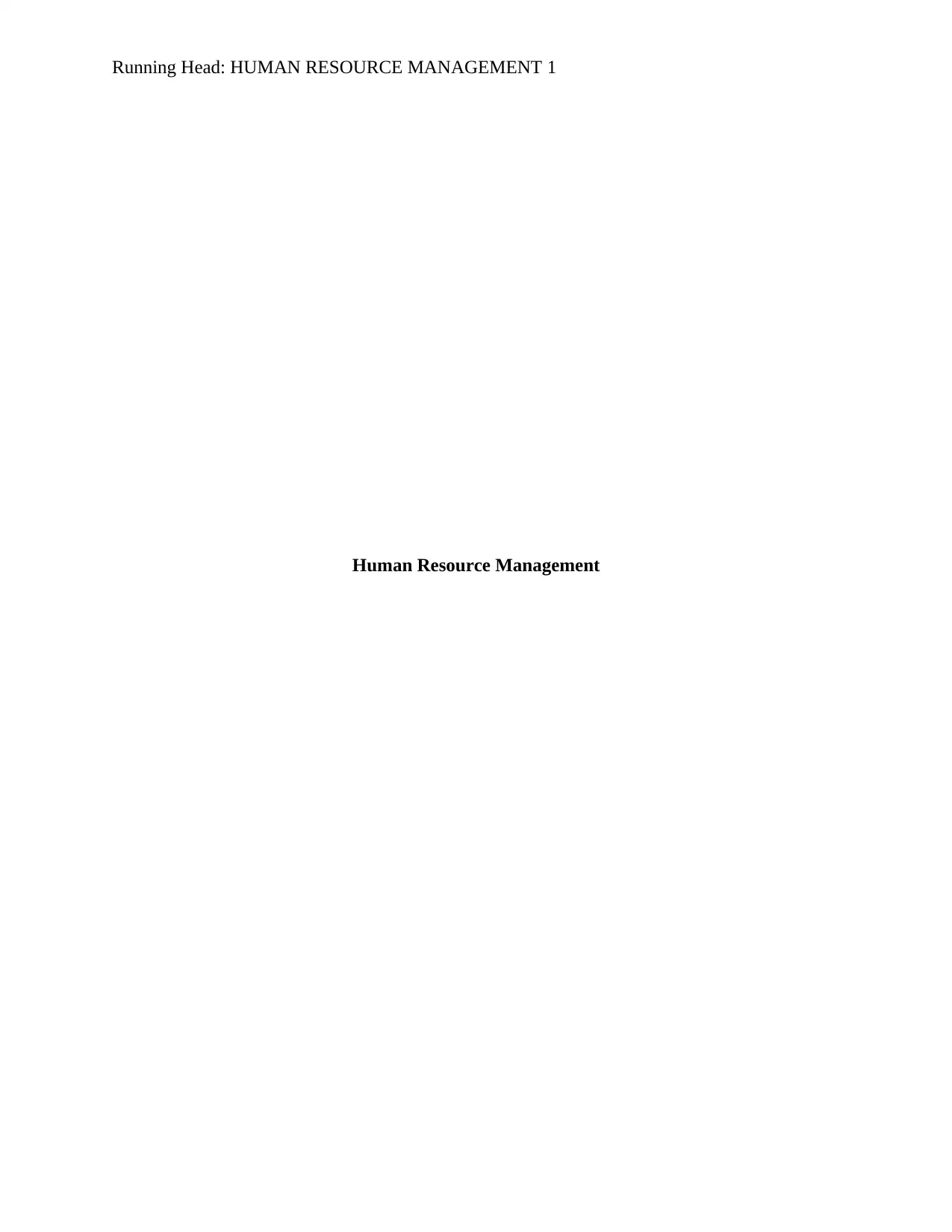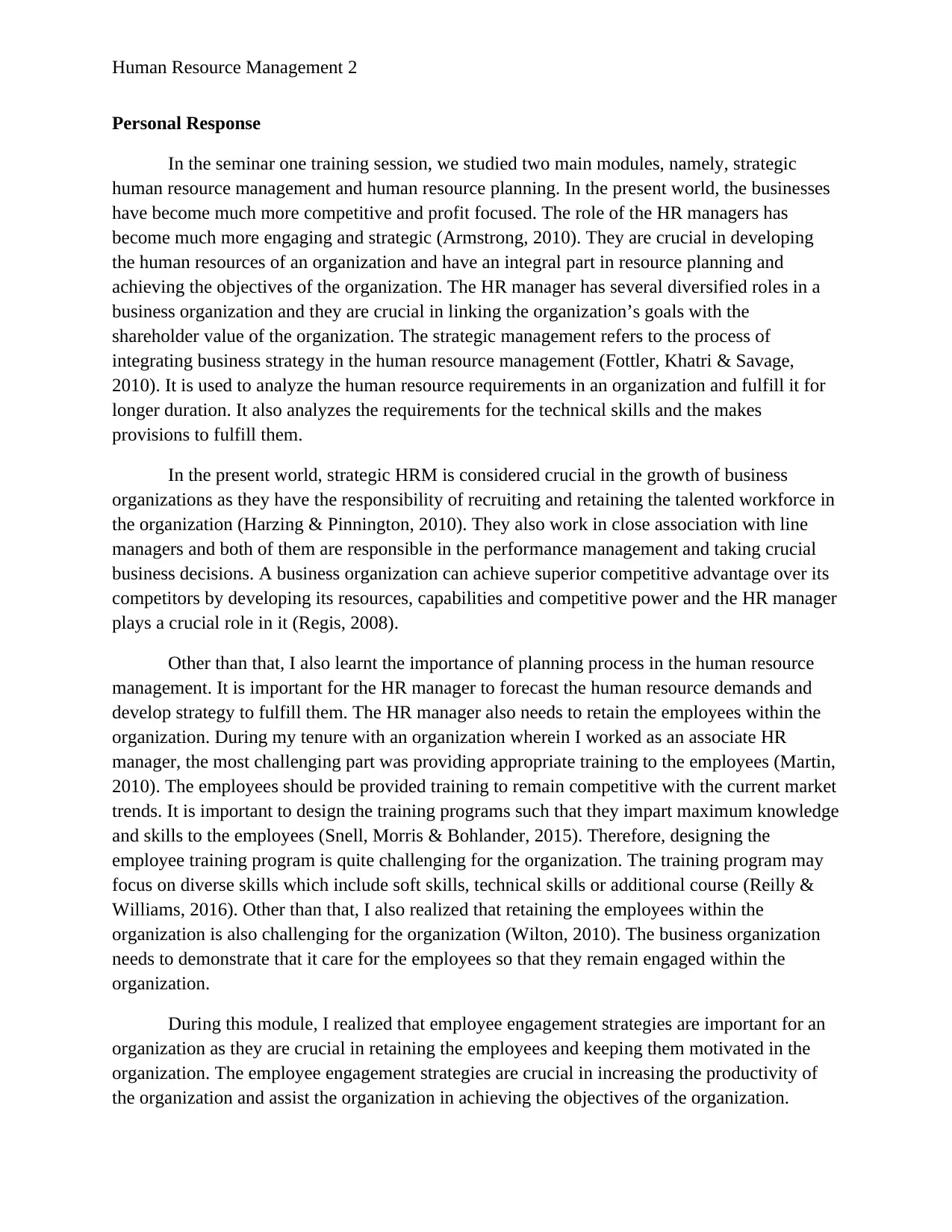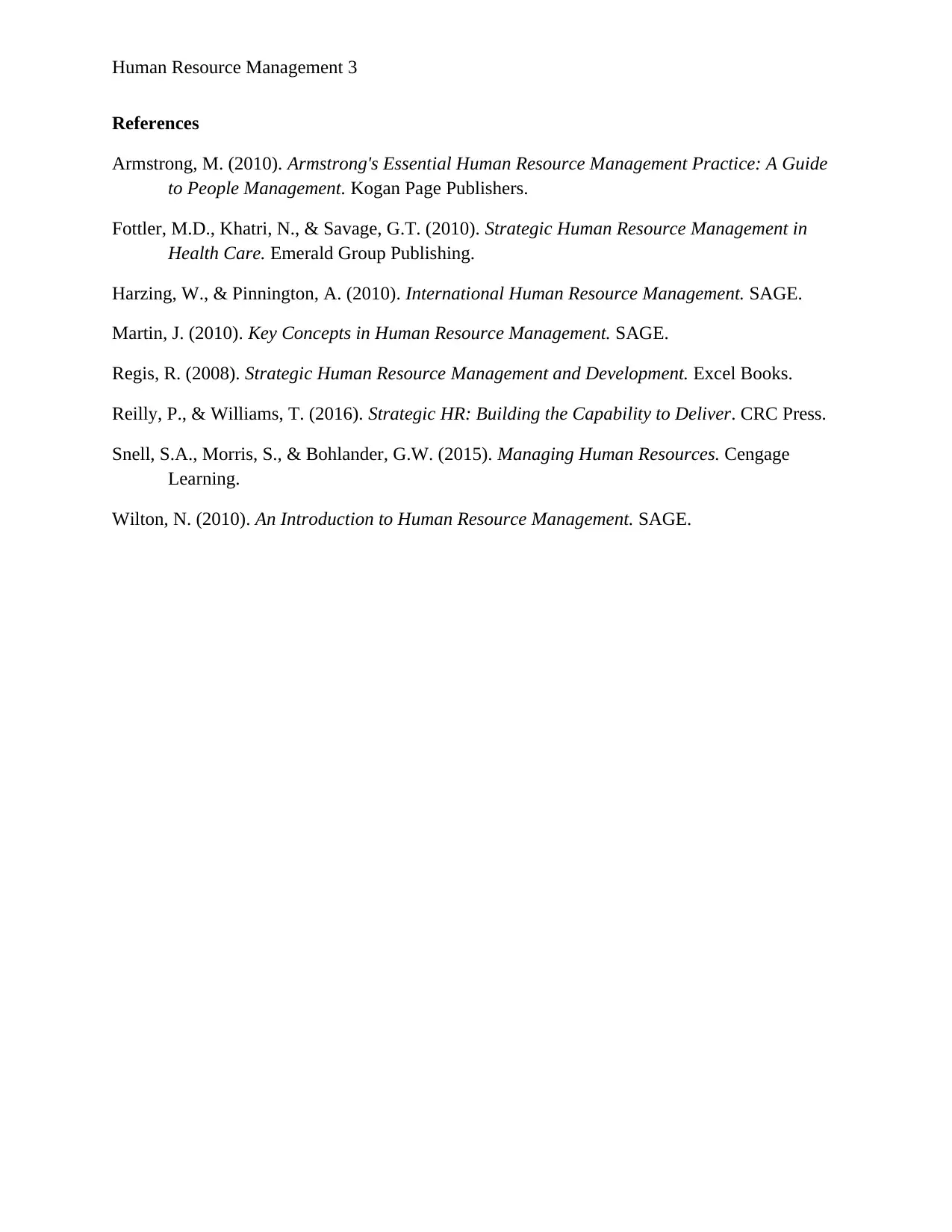Strategic Human Resource Management and HR Planning Personal Response
VerifiedAdded on 2020/04/07
|3
|737
|41
Homework Assignment
AI Summary
This assignment presents a student's personal reflection on key concepts from a human resource management seminar, focusing on strategic human resource management and human resource planning. The response highlights the increasing competitiveness of businesses and the evolving, strategic role of HR managers in linking organizational goals with shareholder value. It discusses the integration of business strategy into HRM, emphasizing the importance of recruiting and retaining talented employees, and the crucial role of HR managers in performance management. The student reflects on the challenges of providing effective employee training programs and the importance of employee engagement strategies for retention and motivation. The response is supported by references to academic literature in the field of human resource management.
1 out of 3









![[object Object]](/_next/static/media/star-bottom.7253800d.svg)